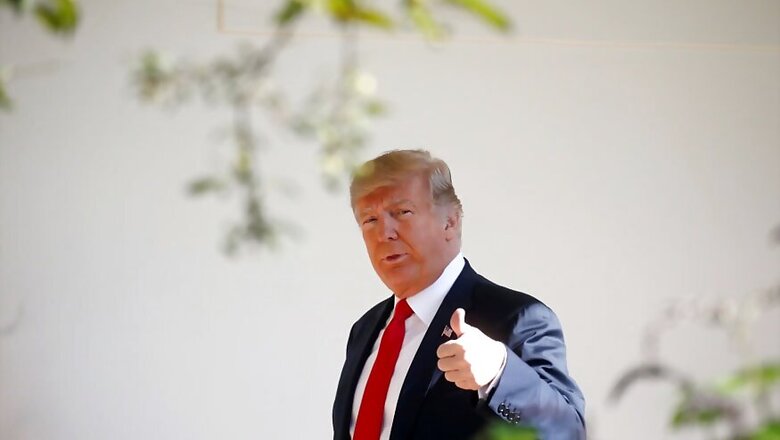
views
Washington: The US jobless rate tumbled in September to its lowest level since December 1969, even as job creation slowed, likely due in part to Hurricane Florence, the government reported Friday.
A month ahead of hard-fought congressional elections, the result was sure to delight US President Donald Trump, who has eagerly taken credit for America's extended run of economic expansion even as his Republican party faces a possible rebuke from disenchanted voters.
Unemployment fell to a 48-year-low of 3.7 percent last month from 3.9 percent, an unusually large drop, according to the Labor Department's closely-watched monthly jobs report.
But despite the lower jobless rate, non-farm employers added just 134,000 net new positions, far weaker than analysts expected.
Hurricane Florence, the storm that made landfall along the mid-Atlantic US coast on September 14, caused widespread disruption for homes and employers but it was not possible to determine the extent to which this might have depressed the September jobs numbers, officials said.
Economists had expected job creation to slow but only to 184,000, even with the hurricane effect, from the 270,000 net new positions created in August. Job gains in July and August were revised up a combined 87,000 from the original reports.
Employees temporarily left unable to work during natural disasters can be left off the government's monthly jobs survey, especially part time workers who receive no pay during the week of the survey, meaning figures can rebound in the month after a storm.
"We're humming, we're just humming," White House economic adviser Larry Kudlow told reporters. "The economy's running full speed ahead."
And he said he expects the economy can maintain the "very good pace" of job creation.
The modest job gains came after private payrolls firm ADP said hiring surged 230,000 in the month, but the two reports often diverge since they calculate employment differently.
S&P Global economist Satyam Panday noted that the three-month average for job gains was 190,000, slightly below the rate of 201,000 over the last year.
But this is "still impressive given the mature stage of the current expansion," he said in an analytical note.
- Echoes of the Nixon era -
Meanwhile, the labor force participation rate held steady at 62.7 percent, while the number of unemployed people fell by 270,000 to six million, with the largest drop among adult women.
Hourly pay edged up 0.3 percent for the month, and is 2.8 percent higher than the same month last year, a notch above inflation.
Job gains were noted in healthcare, up 26,000, transportation and warehousing, up 24,000, and construction, up 23,000.
But the banner result from August's jobs numbers was surely the record low jobless rate, which was driven lower by job gains among adult women.
But with unemployment at levels not seen since Richard Nixon was in the White House, the September report was also sure strengthen the case for the Federal Reserve to continue raising interest rates.
Markets widely expect the central bank to raise rates again in December but some analysts say markets may not have taken the Fed's expectations for next year -- another three increases -- into account, potentially leaving them in for a rude shock.
Wall Street closed down sharply following the news, extending losses from Thursday's selloff due to a sudden jump in bond yields.
The last time the US jobless rate was so low preceded more than a decade of economic pain tied to rising price pressures and efforts to rein them in. But wage increases so far have been modest, something that puzzles economists but allows the Fed to move gradually.
And many analysts see the unemployment rate continuing to decline this year, ramping up pressure on wages and prices.
"No-one at the Fed thinks unemployment near three percent is sustainable," Ian Shepherdson of Pantheon Macroeconomics said in a client note.
As a result, the Fed is all but guaranteed to stick to its plan of raising rates four times before the end of next year, he added.



















Comments
0 comment